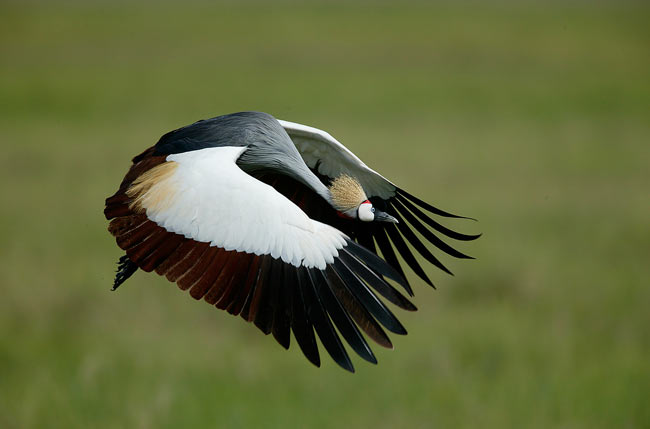Detailed bird watching areas in Kenya, Tanzania and Uganda
The keraita forest reserve is located 45minutes from Nairobi , in kiambu district and originally part of aberdare forest.. This scrap of virgin forest is surrounded by villages, shouldered by plump quilts of tea fenced to prevent any illegal tree-felling. Its helm in high regard by birdwatchers and fishermen and shelters 138 birds species, 31 of which are forest specialists and 20 of which are considered rare.
The 25birds stars of Keraita; Abbott starling, Sharpe's starling, kenrick's starling, Waller's starling, Montane Oriole, Bartailled trogon, Hartlub's Turaco, Jackson's Francolin, lemon dove, Olive pegion, white browed crombec, fine bandedwoodpecker/Tullberg's woodpecker, African green Ibis, Africam emerald Cuckoo, white starred robin, African Hill Babbler, Blackthroated Apalis, white tailed crested flycatcher, Oriole Finch, Montane Buzzard, Ayres hawk Eagle, African crowned Eagle, Huners Cisticola, Trumpeter Hornbill
Bird watching in East Africa
Bird watching in Kenya

Kenya is an orthinological paradise with over 1,100 birds recorded country wide some of which are rare. The good thing about Kenya is, you can bird watch while game viewing . Places best for bird watching are; Arabuko-Sokoke Forest – East African coastal forest with 6 globally threatened birds, including Sokoke Scops Owl. Sabaki River Mouth – a huge estuary with thousands of waders and terns, in addition to pelicans. Also renowned for rarities. Lake Chem Chem and Jilore – freshwater lakes surrounded by coastal scrub, good for ducks, herons, marsh terns and migrating bee-eaters. Mida Creek – a huge tidal inlet fringed by mangrove, is a key stop-over site for migrant waders, including Crab-plovers and Terek Sandpipers. Malindi Harbour – internationally important for flocks of roosting terns and gulls. Etc. Over 400 bird species have been recorded in lake Nakuru e,g white pelicans, marabou stalk, water birds etc Hells gate has steaming hot geysers and it’s a haven for bird watchers. walking, hiking, cycling is allowed in the park. The cliffs are bleeding grounds for vultures, verreaux, eagles, augur bizzards and thousands of swifts. Over 120 bird species have been spotted here; The 25birds stars of Keraita forest; Abbott starling, Sharpe’s starling, kenrick’s starling, Waller’s starling, Montane Oriole, Bartailled trogon, Hartlub’s Turaco, Jackson’s Francolin, lemon dove, Olive pegion, white browed crombec, fine bandedwoodpecker/Tullberg’s woodpecker, African green Ibis, Africam emerald Cuckoo, white starred robin, African Hill Babbler, Blackthroated Apalis, white tailed crested flycatcher, Oriole Finch, Montane Buzzard, Ayres hawk Eagle, African crowned Eagle, Huners Cisticola, Trumpeter Hornbill Kakamega Rain forest; Being such a food rich reserve habitat, the park supports over 300 bird species, over 350 species of trees, 27 species of snakes… our snakes are friendly given the wet nature of the forest throughout the year... no history of snake bites since the park started 20 years ago. The forest is also home to over 400 species of butterflies (about 45% of all recorded butterflies in Kenya), reptiles, mollusks and 7 primate species. With that sort of biodiversity you surely cannot be bored once in the forest. The endangered Turner's eremomela, Charpins flycatcher and the voice mimicking African grey parrot are also found here. The forest is also home to the endangered DeBrazza monkey found at the isolated Kisere Forest Reserve, which is part of the larger Kakamega Forest National Reserve. The majestic black and white colobus monkey alongside flying squirrels, blue monkey and potto (the world's slowest mammal on earth), are among the attractions. Forest bucks, duikers and dik diks are found in this equatorial rain forest. Contact us for possible itineraries and more places good for bird watching
